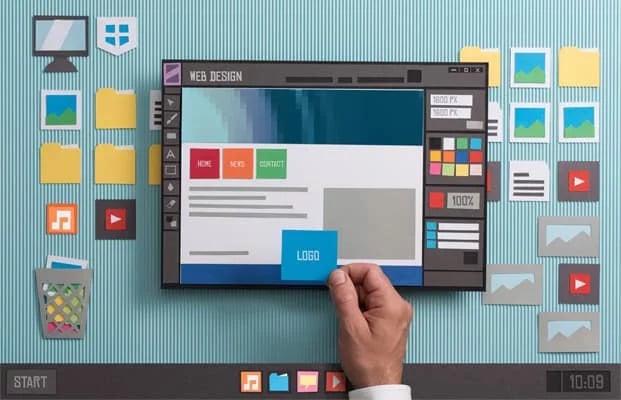Blog
We are a team of results-driven creative geniuses at PMGS Digital Agency that are enthusiastic about expanding your business and have the skills to do it.
Tips for Creating Engaging Content and Effective Website Design

There is a lot that goes into creating your businesses online presence – your website, social media channels, not to mention the content to create and share with your audience. Modern brand need to have great content to share across social media platforms, but also a functional and aesthetic website that people love to explore. When it comes to your website, what should your main focus and where should you invest most of your resources? This comprehensive guide will give you a step by step overview on how to create intriguing content that will enhance your marketing strategy and lead to greater engagement and sales, while also outlining how to make the most of your website design.
What is effective website design?
Effective website design is creating your website with the customer and end user in mind – it should be easy to navigate, functional, and distinctly styled to make it memorable for your brand and business. An effective website will not only serve your customers, but it will enhance your businesses online presence in making it easier for search engines to locate and categorise so that the right audience can find you. A positive user experience on your website will see your site ranking highly in the minds of your customer and to search engines. There are a lot of elements to website design to consider, so read on for the top aesthetic and functional features you can incorporate to make the best of this essential tool.
10 tips to create an effective website design

- Navigation – You want to make it as simple as possible for your customers to find what they’re looking for, so keep your design consistent and intuitive. Menus keep your site easy to explore, and you can add filters and a search bar to assist your users.
- Functionality – This might seem obvious, but make sure your website does what you want it to for you business. Do you want to display your best works? Include a gallery. Facilitate sales? Incorporate e-commerce capabilities. Consider the purpose of your website and ensure it can achieve what you need it to.
- Use an F shape pattern – We read from left to right in the west, so mimic this natural reading pattern when laying out text. This is the most common way that people scan text on a website.
- Visual hierarchy – Arrange your elements in the order of importance. You can emphasise particular components that you want viewers to focus on first by changing the size, colour, imagery, contrast, typography, whitespace, style, and texture.
- Simplicity, style, and recognisability – Ensure you have a strong and recognisable brand image by using consistent colours that best communicate your brand. 5 or less is recommended. Typography is also a key element that can communicate your brand voice and command the attention of the viewer. For example, a strong, bold font will exhibit strength; and lighter, cursive fonts communicate a more feminine image. Use a maximum of 3 fonts.
- Imagery – Communicate the spirit of your brand and personality through photos, graphics, and illustrations. The imagery serves to denote professionalism and credibility.
- Grid based layout – Using grids helps to structure the layout of your website and keep the content organised. Grids help to impose order, feel balanced, and make for an aesthetically pleasing website.
- Good content – We’ll discuss this further, but great content written in a compelling voice helps attract visitors who may even share your content. Even better, once its out there, search engines can continue to link back to it, making content a worthwhile longterm investment.
- Load times – Did you know nearly half of web visitors expect a website to load in 2 seconds or less, and if it doesn’t load within 3 seconds they will leave? Make sure you don’t have any too high resolution images that will slow your loading time.
- Mobile friendly – most users browse and access webpages on their phones and mobile devices, so make sure your website is mobile friendly and will adjust to different screen sizes. Check out our blog on responsive web design here.
Why focus on making good content?
Good content is a worthwhile investment because it continues to pay dividends even after its posted. Search engines can continue to rank your content if its relevant, which keeps organic traffic coming into your website. Other reasons to focus on creating readable, worthwhile content:
- You can acquire backlinks from authoritative websites when they share your work, ranking your site higher and generating more
- Gain and maintain an audience and potential customers
- Boost engagement on social channels
- Original content gets your website more exposure from search engines
- Help build trust, authority and expertise
- Keywords throughout your content get you ranked for SEO
In short, it is essential to have good content on your website for the purposes of SEO and customer retention. So, how do you create this content?
How to create engaging content
- Create something thought provoking and engaging – you want to keep your audience interested and engaged, so focus on creating content that leaves them with questions. Start off with a strong introduction, and weave through stories and anecdotes throughout to keep their attention.
- Make sure you answer their questions – ensure it is easy for them to scan and find the answers they were searching for.
- Give your readers a sense of how to use your content – let readers figure out how to apply the knowledge they’ve gained from your content, i.e. provide tips rather than instructions. Try to spark fresh ideas and encourage them to learn.
- Provide something original – Google punishes repeat articles and duplicate content, so create something original. People are also more likely to link and share new ideas.
- Be accurate in the source of your information and reporting – be wary of the sources you use and cite from, make sure they are reputable sources. Linking to more content is better than less. You can also help search engines to categorise and find your website if you connect to other high-authority websites and sources.
- Be succinct and to the point – avoid waffling on and adding words to hit a word count. Make it short and to the point.
- Use image and videos to illustrate your point – people love pictures and breaking up your text with images helps to enhance their reading experience. It will also assist them to retain the information and they may even share the content.
- Create strong headlines – did you know that 80% of people will read a headline but only 20% will read the article? A strong headline is the key to enticing people to read, so make it sound intriguing and useful.
- Make continual updates to your website or blog – you will need to update regularly stay relevant, this will ensure your information is current and applicable to your current audience.
So, now we know how to create engaging content, what types of content can we create? Here is a checklist for the different types of content you can create, and the situations when it might be the appropriate to use.

10 types of content you can do
- Blogs – also known as content marketing, blogs can help you build authority and trust in your customers minds when you provide them with useful information. Other websites can also make note of your content which will earn you backlinks and citations to improve your SEO.
- Original research – This is a good way to generate citations and backlinks, while enhancing your SEO efforts.
- Video – especially prevalent with the rise of TikTok, videos get attention and are popular with mobile users. Fun facts about videos: 81% of businesses using video marketing saw an increase in sales. You can use them to introduce your business, showcase your products and services, as well as provide tutorials when appropriate.
- Infographics- they are among the most shared content online so make the info interesting and reliable for people to link to and share.
- Long form articles – This will require a greater time commitment but is worth it. People love to share them to their own social channels which will result in more traffic. They require research and in depth content.
- Email newsletters – emails are known to have good return on investment, and have a diverse range of uses. You can share your new products, business updates, and any other content.
- Checklists – they are fun, easy to make, and very quick to read and share.
- Quizzes and polls – mostly on social media channels, quizzes and polls are an excellent way to boost engagement and interactions with your audience.
- Webinars – these are a business content marketing format and are an excellent way to show off your expertise and demonstrate products.
- Case studies – feature your satisfied customers and show off how your products and services benefit people in the real world. You can build trust and authority as well as highlight your competitive advantage.
So there you have it: while effective website design is essential for customers to find and use your website, engaging content is what will keep coming back. Both elements of your website require time and resources to create something that will bring you excellent returns and repeat customers. You can access invaluable resources with PMGS Digital Marketing to create a web design best optimised for you business, along with our creative capabilities to generate great content that will get you ranked.


